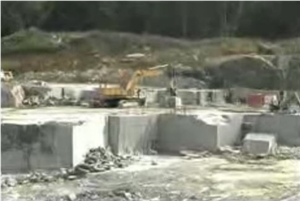Geological Marvels Await: Granite Quarries in Rustenburg
Geological Marvels Await: Granite Quarries in Rustenburg
Blog Article
Introducing the Mysteries: Inside the Operations of Granite Quarries
Today, we embark on a trip of discovery, peeling off back the layers of privacy that surround the procedures of granite quarries. Prepare to be astounded as we dig right into the geological marvels, reveal the elaborate techniques utilized in quarrying, and witness the accuracy and creativity entailed in changing raw granite obstructs into building work of arts.
The Development of Granite: A Geological Marvel
Granite, an awe-inspiring geological wonder, is formed via a complicated process that extends millions of years. This igneous rock originates deep within the Earth's crust, where extreme warm and pressure cause the melting and recrystallization of existing rocks. The development of granite begins with the air conditioning of magma, the liquified rock that lies under the Planet's surface. As the lava cools down, it solidifies right into igneous rocks, which can later be exposed with the disintegration of overlying layers.
The unique composition of granite is an outcome of its slow-moving air conditioning procedure. This slow air conditioning enables the minerals within the magma to expand and crystallize, developing a grainy texture that defines granite's particular look. One of the most abundant minerals found in granite are mica, quartz, and feldspar, which contribute to its hardness, sturdiness, and distinctive polychromatic patterns.
Over countless years, the movement of tectonic plates and the pressures of disintegration slowly bring granite to the Earth's surface area. As soon as subjected, granite can be quarried and transformed right into numerous architectural and attractive features, such as counter tops, flooring, and monoliths.

Quarrying Techniques: From Dynamites to Diamond Cable Sawing
Quarrying methods have actually advanced over time, transitioning from making use of dynamites to the implementation of ruby cable sawing. Typically, nitroglycerins were utilized to break and loosen up apart the granite from its natural bedrock. This procedure involved exploration holes right into the rock face, putting dynamites, and after that detonating them to produce cracks. While efficient, this technique had numerous drawbacks, consisting of safety problems, environmental influence, and the unpredictable nature of the cracks.
Over the last few years, the intro of ruby wire sawing has actually changed the quarrying industry. This method entails using a diamond-coated cable to puncture the granite. The wire is pulled back and forth in a sawing activity, gradually slicing with the rock with precision and control. Contrasted to nitroglycerins, ruby wire sawing offers various advantages. It is a more secure and extra environmentally pleasant approach, as it does not include the usage of dynamites or generate too much sound, dust, or resonances. In addition, the cuts made by diamond wire sawing are exact and tidy, decreasing waste and optimizing the usable material.
The application of diamond wire sawing has also increased productivity in granite quarries. It allows for faster cutting and removal, decreasing downtime and raising the overall efficiency of the procedure. In addition, this strategy makes it possible for quarry drivers to draw out larger blocks of granite, which can be used for various objectives, consisting of building and construction, sculpture, and interior decoration.
Extraction and Block Cutting: Introducing the Art of Accuracy
The process of extraction and block cutting in granite quarries showcases the thorough creativity required to attain precision in the production of granite materials. This phase of the quarrying procedure entails the cautious elimination of huge granite blocks from the earth and the succeeding cutting of these blocks into smaller sized, much more workable sizes.
To remove the granite blocks, quarry employees utilize a combination of hefty equipment, such as excavators and loaders, along with skilled hands-on labor. The granite blocks are thoroughly separated from the surrounding rock using specialized strategies and tools. This process calls for precision and proficiency to guarantee the blocks are removed without damage or damage.
Once the blocks are drawn check my blog out, they are transported to a cutting center where they undergo additional handling. Block cutting is a intricate and delicate process that calls for accuracy cutting tools and machinery - granite quarries in rustenburg. Knowledgeable craftsmen utilize diamond-tipped saws to meticulously slice the blocks into slabs of the wanted thickness. This step needs cautious focus to information to ensure the slabs are cut equally and properly.
The art of precision in extraction and block cutting is important in the manufacturing of granite products. The resulting pieces are made use of in a variety of applications, including counter tops, flooring, and architectural facades. The precise interest to information and accuracy in these procedures makes certain that the last items fulfill the greatest criteria of top quality and longevity.
Transport and Logistics: Relocating Hills of Stone
The transportation and logistics associated with relocating hills of rock from the quarry site to their designated locations require careful planning and coordination. Once the granite blocks are removed click to read and reduced, the following important action is to move them successfully and safely (granite quarries in rustenburg). This process involves numerous elements, consisting of transport modes, equipment, and routes
Transport modes play an important role in the motion of granite blocks. Trucks are frequently utilized for short-distance transportation because of their versatility and availability. They can navigate through slim roads and deliver the rock directly to construction sites. For long-distance transportation, ships and railways are favored. Railways offer a affordable and ecologically friendly alternative, while ships permit mass transport to far-off areas.
Tools such as cranes and forklifts are made use of to tons and dump the granite blocks onto the transport vehicles. These equipments make sure the safe handling of the hefty rock, reducing the threat of damage during transport.

Polishing and Finishing: Transforming Granite Into Architectural Masterpieces
To transform granite into architectural masterpieces, the procedure of brightening and go to the website ending up is meticulously executed with precision and workmanship. When the granite blocks are drawn out from the quarry and moved to the handling center, they go through a number of stages of finishing and brightening to boost their visual charm and toughness.
The first step in the polishing process is to eliminate any type of rough edges and blemishes from the surface of the granite. This is done using specialized machinery that employs abrasive pads or ruby devices. The granite is after that meticulously polished utilizing gradually finer grits to achieve a smooth and glossy finish.
After polishing, the granite undertakes a process called developing. This includes using abrasive pads or brushes to create a matte or satin surface, depending on the desired appearance. Refining additionally aids to further improve the natural shade and pattern of the granite.
As soon as the wanted surface is accomplished, the granite is extensively cleaned up and examined for any remaining blemishes. It is then treated with a sealant to secure it from spots, moisture, and various other ecological elements. This sealer likewise helps to enhance the sparkle and long life of the granite.
The final action in the sprucing up and finishing procedure is quality assurance. Each slab of granite is thoroughly inspected to make certain that it satisfies the highest criteria of high quality and craftsmanship. Any kind of flaws or disparities are dealt with prior to the granite prepares to be changed right into building masterpieces.
Verdict
To conclude, the procedures of granite quarries include an intricate process that showcases the marvel of geological development, the usage of innovative quarrying methods, and the accuracy in removal and block cutting. Furthermore, transport and logistics play a vital role in relocating the substantial quantities of rock, while brightening and completing strategies transform granite into building work of arts. The world of granite quarries reveals a remarkable blend of creativity, scientific research, and ability.
Prepare to be surprised as we delve into the geological marvels, discover the detailed strategies employed in quarrying, and witness the precision and creativity included in changing raw granite obstructs right into building work of arts.To extract the granite blocks, quarry workers utilize a combination of hefty machinery, such as loaders and excavators, along with skilled hands-on labor. The granite blocks are very carefully removed from the bordering rock making use of specialized devices and strategies.The art of accuracy in removal and block cutting is critical in the manufacturing of granite products.In verdict, the procedures of granite quarries entail an intricate procedure that showcases the wonder of geological development, the use of sophisticated quarrying methods, and the precision in extraction and block cutting.
Report this page